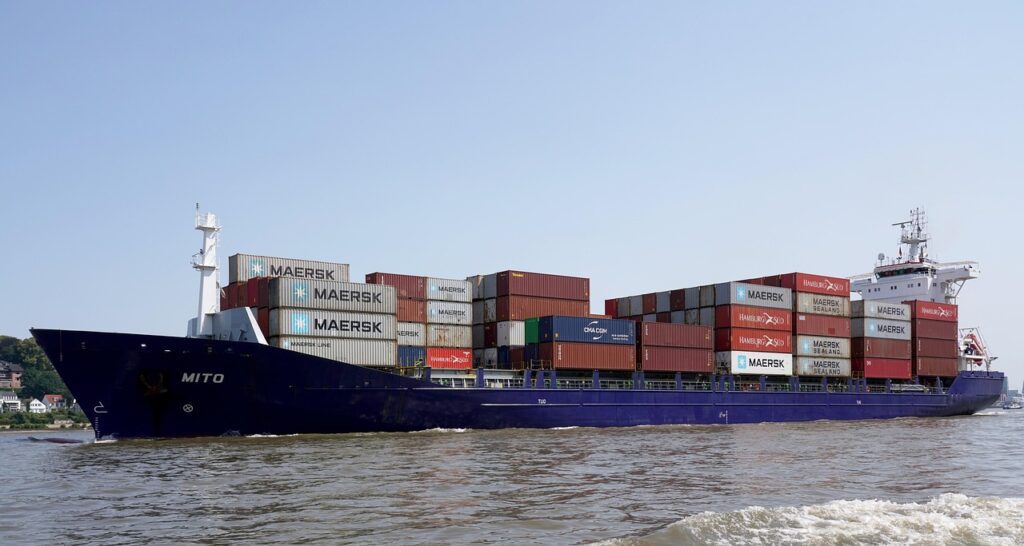Global supply chains today are more interconnected than ever before. But when operations are sprawled across continents, disruptions can ripple instantly, like a stack of dominoes. This is why it’s important to ensure visibility into each moving part of your supply chain.
Read also: Driving Business Efficiency Through Supply Chain Visibility
Yet many logistics networks still operate with blind spots, relying on outdated tools, static spreadsheets, or delayed reporting.
Enter 3D technology.
With these innovations, we can build an interactive, real-time, data-rich replica of physical operations. From auditing warehouses to monitoring freight in transit, 3D tech is revolutionizing how businesses see and manage their supply chains.
Stay tuned until the end if you want to know more about how 3D technology is revolutionizing supply chain visibility. We’ll explore how these technologies bring next-level transparency to logistics and take a closer look at some of the tools changing the game for inventory tracking and site digitization.
From Flat Data to Full Dimension: Why 3D Is a Game-Changer
Supply chain management relies on data, but until recently, everything was mostly two-dimensional. Think of spreadsheets, barcodes, static floor plans, or siloed software platforms. These tools can only take you so far.
In a world where a single late shipment or miscounted pallet can disrupt the activity of several businesses and organizations, we need richer, real-time insights. And that’s where 3D technology is proving its worth.
By capturing spatial data in three dimensions, companies gain a much clearer and more dynamic understanding of their facilities, assets, and workflows. Whether you’re managing inventory in a vast warehouse or coordinating container movement across international ports, 3D tech turns fragmented information into a cohesive, live snapshot.
Digital Twins for Warehouses
One of the most exciting (and practical) applications of 3D tech in logistics today is the digital twin. This is a virtual replica of a physical asset, operation, or facility that updates in real time based on incoming data.
The technology is already in action, with global logistics giants like DHL and Maersk investing in digital twins to simulate warehouse layouts, identify bottlenecks, and optimize processes before making real-world changes.
To create a digital twin, sensors and 3D scanners collect real-time information from the physical environment (like equipment status, temperature, stock levels, or spatial configuration). That data is fed into the digital twin, where it can be analyzed, visualized, and manipulated safely.
Once the twin is complete, you can simulate what happens if you rearrange shelving units, introduce automation, or increase throughput without moving a single box and disrupting current operations. It’s the smarter, safer way to plan, predict, and prevent.
3D Capture for Smarter Inventory and Facility Audits
Whether it’s inventory counting, safety checks, or layout planning, traditional audits often require walking through large facilities with clipboards or tablets, manually logging issues, or reconciling stock. Not only is this slow, but it’s also prone to error.
That’s where 3D scanning and spatial capture come in. Using LiDARstructured light, or photogrammetry, companies can digitally capture entire warehouses, production floors, or storage yards in just minutes, creating highly accurate 3D models that can be explored remotely.
This is especially useful for inventory management and facility audits. With spatial data captured from multiple angles, businesses can quickly identify stock inconsistencies, blocked pathways, or underutilized space. These scans feed into digital platforms where users can measure distances, count items, or annotate changes—all from their laptop or mobile device.
To do this, you need a point cloud camerawhich converts millions of spatial data points into detailed 3D representations of the environment. The device automatically captures high-resolution panoramic images and depth data that can be used for planning, auditing, or even integrating with warehouse management systems.
Transparency in Transit
In the current system, once goods leave the warehouse, visibility often drops off a cliff. This can be a problem, especially when customers, regulators, or your team want answers now, not next week.
3D technologies are starting to plug that gap.
With the help of 3D scanning tools combined with location-aware sensors, logistics teams can remotely monitor cargo condition, placement, and even the environment around a shipment. For example, a 3D scan of a shipping container at departure and arrival can help identify whether anything shifted, was mishandled, or got damaged en route.
These tools also support remote auditing. 3D scans allow auditors to examine facilities and containers in detail from anywhere. Measurements, annotations, and comparisons can all be done digitally, making the process faster, more consistent, and less prone to error or subjectivity.
Wrap Up
3D technology can bring powerful visibility and precision to supply chains, from smarter audits to real-time monitoring. While cost and integration challenges remain, the momentum is already building. With practical tools already in play and adoption steadily rising, the leap to mainstream use isn’t as distant as it once seemed. The supply chain of the future is already starting to take shape, in 3D.

